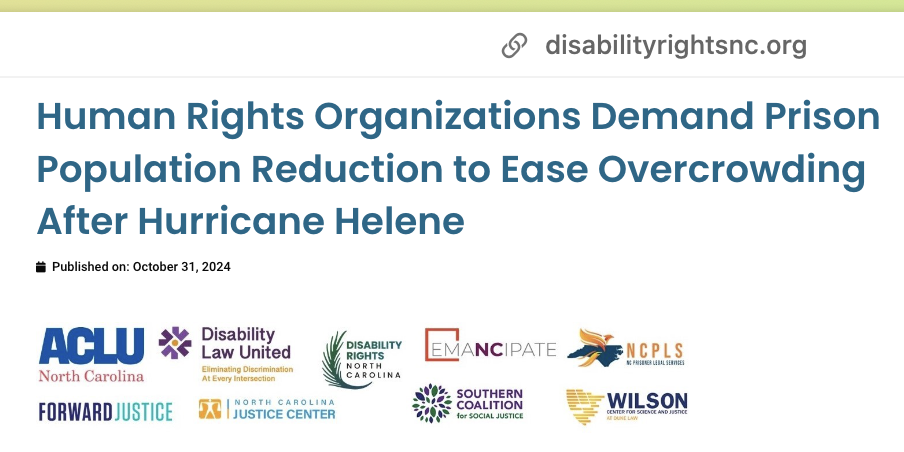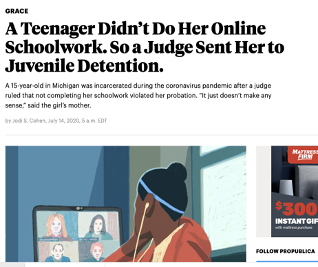background-image: url(img/people.png) .left-column50[ # Welcome to the Future of Access Technologies Week 9, Sustainability & Disaster Response CSE493e, Fall 2024 ] --- name: normal layout: true class: --- # Important Reminder .left-column[ ] ## Make sure zoom is running and recording!!! ## Check on zoom buddies ## Make sure captioning is turned on --- [//]: # (Outline Slide) # Learning Goals for today - Disaster response and Access - Governmentality and Access - Information Economy and Access --- ## Announcements (1/3) Just wanted to say thank you for all your comments in participation. I don't get to respond to them all personally, but I see you -- folks who - helped other students get comfortable with Ed - Had a tough day and went on zoom to compensate - Appreciated things we do in class, from speakers to opening up discussions around the election ...and much much more. I read every comments --- ## Announcements (2/3) - Final project presentations will be split into a poster session and presentations - Attendance is required - Come to both sections to support your peers who are presenting posters (unless you have a conflict) - Come to class on Friday to see the presenters - The poster session will be public --- ## Announcements (3/3) Making posters accessible - Keep in mind whether the font and color contrast will be visible when the poster is printed. - Text size: Bigger is better! - Ideally, the title is 158 point; - Section headings are 56 point; - Body text is 36 point; - Figure captions & footnotes are 24 point. - If you use smaller fonts, we will make a judgment call on readability. - You should also provide a QR code next to each image that provides ALT text for that image. --- .left-column[ ## Disability and climate change ] .right-column[  ] --- # What is the connection? Quote from “Disability, Climate Change, and Environmental Violence: The Politics of Invisibility and the Horizon of Hope” by Julia Watts Belser (Disability Studies Quarterly) .quote[Disability politics offer a vital resource for grappling with climate change… [they reveal] the political stakes of diagnosis—the way power contours how, when, and to what ends we recognize human and ecological impairment.] --- # A disability+climate agenda (1/10) - Government Services & Civic Engagement Essential to changing how we address climate change, and implementation of the same --- # A disability+climate agenda (2/10) - Government Services & Civic Engagement - Process Accessibility - Resource distribution - Accessibility of voting --- # Example: Disaster Response Planning - Decisions about who is included (e.g. disaster response plans) are often ableist -- actively de-prioritizing disabled lives - E.g. during COVID; Hurricane Katrina - Emergency broadcasts often inaccessible (e.g. no captions; inaccessible data visualizations; no ASL interpretation; inaccessible websites) - Disabled people are often institutionalized (e.g. prison; hospital; “nursing homes”) and many institutions are deprioritized - Shelters may refuse people with disabilities --- # Example: Helene .left-column40[  ] .right-column60[ .quote[Hurricane Helene shut down four North Carolina prisons due to severe damage. Many incarcerated people at these prisons suffered days without running water or electricity... [now there is] overcrowding and understaffing, which have an especially negative impact on individuals with disabilities who require assistance with activities of daily living and medical and mental health care.] ] ??? Incarcerated people report sleeping on the floor in gymnasiums with little to no access to communication with loved ones, reduced food rations, unreliable access to medical and mental health attention, and increased tension and violence. Overcrowding and understaffing --- # Governmentality (1/2) .left-column50[  ] --- # Governmentality (2/2) .left-column50[  ] .right-column50[ The government is often a site for algorithmic decision making; surveillance; etc This differentially impacts people of color, low-income people and people with disabilities ] --- # A disability+climate agenda (3/10) - Government Services & Civic Engagement - Accessibility must be considered in the government response to climate change. Accessibility can impact safety, civic engagement, access to services, and who is included in the democratic process - Top down decisions that don’t include people multiple viewpoints can be problematic - Give choice/agency to people many backgrounds - Give responsibility for support to governmental context --- # A disability+climate agenda (4/10) - Government Services & Civic Engagement - Education - Source of future leaders and decision makers - Source of future innovators - Strongly associated with things that can help to mitigate climate change, such as empowered family planning for women - Also generally not designed to include people with disabilities --- # A disability+climate agenda (5/10) - Government Services & Civic Engagement - Education - STEM is particularly exclusive and a top interest for disabled people - Tools & software rarely accessible - Accessible teaching also helpful to non-English speakers; undiagnosed; etc. - Lots of improvement possible -- disabled students felt MUCH more supported during COVID [TACCESS 2022] --- # A disability+climate agenda (6/10) - Government Services & Civic Engagement - Education - Information economy - Information is power - Often critical in the fight to address environmental damage, climate change, etc - Can help to support activist movements - Can change the balance of power --- # A disability+climate agenda (7/10) - Government Services & Civic Engagement - Education - Information economy - Example: Rentals and housing efficiency --- # Research Questions Study 1: How does energy consumption in low-income areas differ or compare to those in “green” or typical households? -- Study 2: What are the causes of conflict between landlords and tenants? What are the solutions? -- Study 3: How can energy feedback help to mediate this [CSCW 2014] -- Study 4: How does this differ in other contexts (India) [CHI 2013] --- # Overall conclusions - Money, power imbalances, and lack of information all contribute to and impact how energy is used. - Individual action is limited in impact, particularly when renting. - Information can help activate communities to work together to fight policies that hurt them - Biggest opportunity for change is prior to lease signing --- # Rentals and Temporary Housing More likely to include people with disabilities and health concerns More likely to include lower income households More likely to include people of color and immigrants/refugees Spend greater percentages of income on energy --- <iframe src="https://embed.polleverywhere.com/free_text_polls/xPLIfUbDG1f2jJoqoRtwo?controls=none&short_poll=true" width="800px" height="600px"></iframe> --- # What did we find in our studies? .left-column50[ ## Before Renting  ] -- .right-column50[ ## After Renting  ] --- # Existing Home Feedback Technology Not really targeted at renters (30% in US; 1-5 year turnover) Paucity of information about factors prospective tenants care about - Actual cost - Sunlight & noise - Housing quality --- # Missing rich intersectional data Housing choices linked to health outcomes & disability (lead, asthma, mold, air quality, etc.) Landlord citations -- is a landlord trustworthy Sunlight [crowdsourced comparable estimates] -- impacts health & energy use Noise -- impacts health/disability & comfort --- # A disability+climate agenda (8/10) - Government Services & Civic Engagement - Education - Information economy - Example: Rentals and housing efficiency - Example: Transportation and public spaces --- # What might we want to know? Sidewalks, public transit, and businesses can be inaccessible to those with disabilities .left-column30[   ] .right-column70[ .font-mediumsmall[[Project Sidewalk](http://projectsidewalk.org) combines remote crowdsourcing + machine learning to map and assess accessibility features of sidewalks] .font-mediumsmall[[AccessMap](http://accessmap.io) provides a personalized and interactive view of a city's accessibility, including road grade, sidewalk locations, and curb ramps] ] --- # Urban Accessibility and Mobility Sidewalks, public transit, and businesses can be inaccessible to those with disabilities. [Work by Froehlich & Caspi]: 1. Develop scalable techniques to map and assess every sidewalk, transit stop, and business in the world 3. Create new digital tools that provide personalized routing, government accountability, and support new urban analytics. 3. Examine geo-spatial patterns of and influences on urban accessibility, barriers and facilitators of accessible infrastructure, and socio-cultural contexts of urban access across the globe. --- # Third Spaces also not accessible  .corner-ribbon.tr[COMPASS 2021] --- # QUICK BREAK Good time to stand and stretch --- # A disability+climate agenda (9/10) - Government Services & Civic Engagement - Education - Information economy - Innovation - Innovation is part of how we address the climate crisis - Accessibility has driven innovation over the years - Who innovates matters and impacts what is made (back to education…) --- # Case study: Medical Making - Conflict between Community and Clinical Values in the U.S. - Have seen in multiple case studies - Wish to help where you can, right away vs “do no harm” - Emphasis on doing what you can vs longitudinal support/whole case management - Deeply rooted differences - One team member was threatened with COVID-infected artifacts when asking about safety - Complete rift in one COVID site of study between medical making and community making .corner-ribbon.tr[Savage, TACCESS 22] --- # Study Population: Makers; recipients; clinicians in seven countries - United States (E-Nable; and two private companies) - Mexico (E-Nable with and without government) - India (E-Nable) - Chile (E-Nable) - Costa Rica (E-Nable) - Brazil (E-Nable with government) - France (E-Nable) --- # Key differences between U.S. and other countries - Multi-stakeholder collaborations (innovators and clinicians) - Formal collaborations with documented guidelines - Express support for follow up - Often include funding - Community engagement - Families/community working and learning together - Follow up included in process - Legal context more forgiving? --- # A disability+climate agenda (10/10) - Government Services & Civic Engagement - Education - Information economy - Innovation